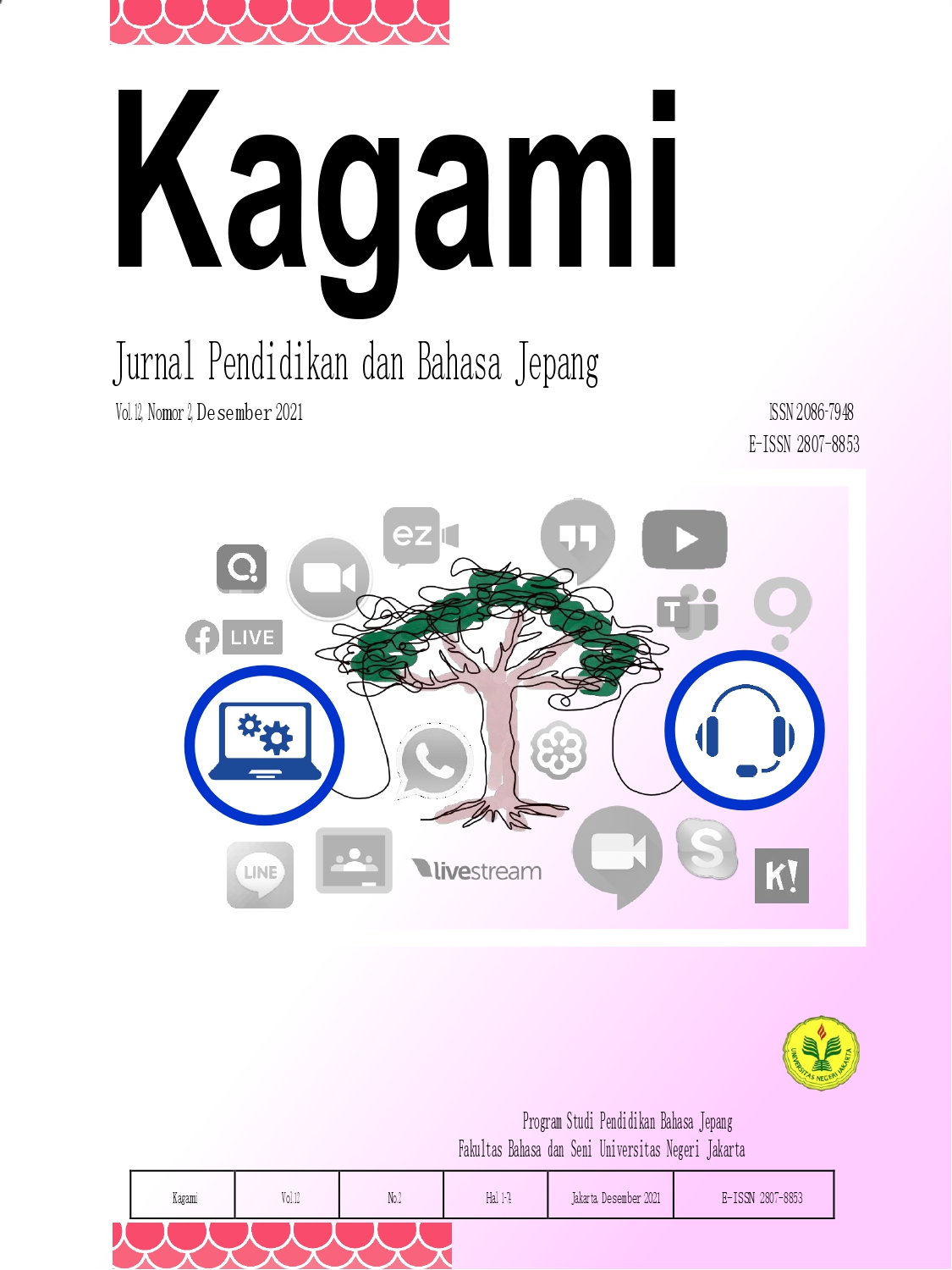MEDIA PEMBELAJARAN GAME EDUKASI KANJI BERBASIS ANDROID MENGGUNAKAN CONSTRUCT 2 TERHADAP KEMAMPUAN MENGINGAT KANJI
Keywords:
Learning Media, Educational Games, Kanji, Android, Construct 2, Memory AbilityAbstract
Japanese students have difficulty learning kanji. The reason is the large number of kanji letters and the unique characteristics of kanji such as bushu, kakusuu, hitsujun, and yomikata kun'yomi and on'yomi. Then the Japanese language lecture at the State University of Jakarta targets students to complete the Basic Kanji Book II with in 1 semester. After the development of technology, now there are many designs of Android-based learning media. Thus, the researcher intends to use android to improve students' kanji memory skills, namely by making an android-based kanji educational game. The purpose of this study was to determine the use of kanji educational game learning media on students' ability to remember kanji and to determine student responses to the use of kanji educational game learning media in Kanji II course. The method used is an experimental quantitative approach with the Pre-Experiment method, with the One Group Pretest-Posttest Design. The population in this study were second semester students of the Jakarta State University Japanese Language Education Study Program for the 2020/2021 academic year. The sample of class A and class C with a total sample of 30 students. The instruments used are pretest-posttest, and questionnaires/questionnaires. Based on the results of data analysis, it can be seen that the ttable value at a significant level of 5% is 2.9. then the value of tcount in this study is 8.35. Thus, it can be concluded that Ha is accepted and Ho is rejected (tcount > ttable or 8.35 > 2.9), which means that the use of kanji educational game learning media can improve the ability to remember kanji.
References
Eder, Boy. 2016. Media Pembelajaran Kanji Berbantuan Komputer Dengan Aplikasi Software Adobe Flash.
Ependi, U., & Sopiah, N. (2015). Pemanfaatan Teknologi Berbasis Android Sebagai Media Belajar Matematika Anak Sekolah Dasar. Matrik, 17(2).
Gora, W., & Sunarto. 2010. PAKEMATIK. Jakarta: PT. Elex Media Komputindo.
https://construct-2.id.uptodown.com/windows pada tanggal 10 Februari 2021.
Juraman, S. R. (2014). Pemanfaatan Smartphone Android Oleh Mahasiswa Ilmu Komunikasi dalam Mengakses Informasi Edukatif. Jurnal Acta Diurna. Vol 3.
Kano, Chieko dkk. 2004. BASIC KANJI BOOK Vol II Kihon Kanji 500. Tokyo: Bonjinsha.
Kano, Chieko dkk. 2004. BASIC KANJI BOOK Vol I Kihon Kanji 500. Tokyo: Bonjinsha.
Prasetiani, D & Diner, L.. (2014). Meningkatkan Kemampuan Kanji Mahasiswa Melalui Media Kartu Huruf Kanji. Jurnal Izumi. Vol 3 No 2.
Sudjianto & Dahidi, A. 2004. Pengantar Linguistik Bahasa Jepang. Jakarta: Kesaint Blanc.
Surya, Mohamad. 2015. Strategi Kognitif dalam Proses Pembelajaran. Bandung: Alfabeta.
Wirawan, S., Agushinta, D, dkk. (2013). Analysis of Child Computer Interaction in Edutainment and Simulation Games Application on Android Platform in Indonesia. International Journal of Advanced Computer Science and Applications (IJACSA). Vol 4. Issue 7.
Zaini, M., & Soenarto, S. (2019). Persepsi Orangtua terhadap Hadirnya Era Teknologi Digital di Kalangan Anak Usia Dini. Vol 3, Issue 1.





